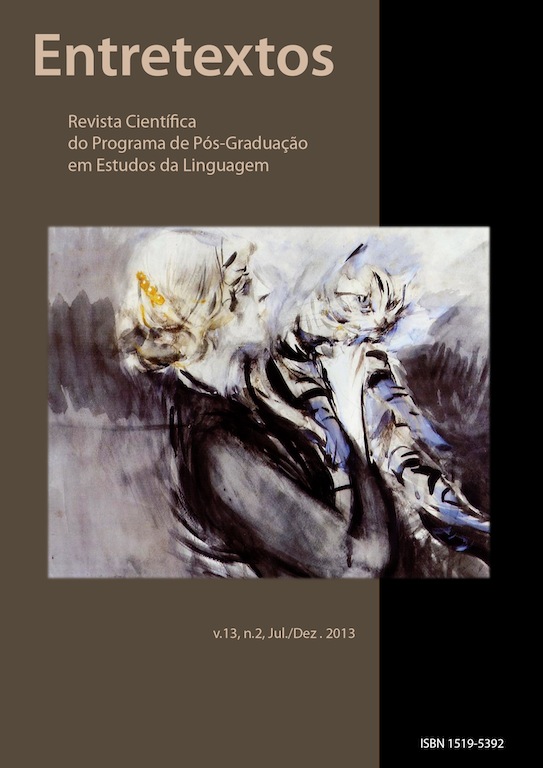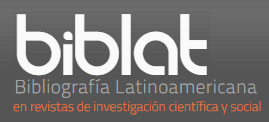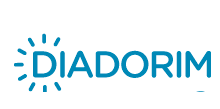O marcador do discurso 'aliás' e suas possibilidades para a língua espanhola
DOI:
https://doi.org/10.5433/1519-5392.2013v13n2p344Keywords:
Discourse marker, Spanish language, TranslationAbstract
A brief analysis of texts in which the Portuguese discourse marker aliás is found allows us to conclude that there are at least two contexts in which this expression is used: as a rectification reformulative and as a digresser. From these preliminary observations, it seems, therefore, that it is a multifunctional marker, according to Martín Zorraquino and Portolés (1999) theory, in which the marker reaches different nuances or meaning effects depending on the context. In this paper, we analyze the possibilities for translation of the term aliás to Spanish. Therefore, we propose, at first, two statements of opinion articles extracted from Brazilian newspapers and two tweets posted on the social network twitter.com. Such statements were given to six speakers of Spanish as a foreign language (advanced level) and / or native Spanish speakers who speak Portuguese as a second language to do their Spanish version. In two of these statements, the marker was used in the context of reformulation and the other two, of digression. In a second step, we collated the data obtained from the productions of Spanish speakers in L1 and LE with the theoretical definition that describes the state of the question. Finally, we present some considerations about the translations of the discourse marker aliás to Spanish language and the difficulty of this correlation between languages.Downloads
References
GARCÉS GÓMEZ, María Pilar. La organización del discurso: marcadores de ordenación y de reformulación. Madrid: Iberoamericana, 2008.
GARCÉS GÓMEZ, María Pilar. La reformulación discursiva. In: GARCÉS GÓMEZ, María Pilar (dir.). La reformulación del discurso en español en comparación con otras lenguas. Madrid: Universidad Carlos III de Madrid: Boletín Oficial del Estado, 2009, p. 17-35.
KOCH, Ingedore Grunfeld Villaça. Argumentação e linguagem. 9. ed. São Paulo: Cortez, 2004.
LEÃO, Danuza. Verão em Salvador. Disponível em: http://www1.folha.uol.com.br/colunas/danuzaleao/1168953-verao-em-salvador.shtml. Acesso em 03 abr. 2013.
LUSCHER, Jean-Marc. Les marques de connexion: des guides pour l'interprétation. In: MOESCHLER, Jacques et al. Langage et pertinence: référence temporelle, anaphore, connecteurs et metáphore. Nancy: Presses Universitaires de Nancy, 1994, p. 175-227.
MARTÍN ZORRAQUINO, Mª A. & PORTOLÉS LÁZARO, J. Los marcadores del discurso. In: BOSQUE MUÑOZ, I.; DEMONTE BARRETO, V. (dir.), Gramática descriptiva de la lengua española. Tomo III. Madrid, Espasa, 1999. p. 4051- 4213.
MONTOLÍO, Estrella. Conectores de la lengua escrita. Barcelona: Ariel, 2001.
PORTOLÉS, J. Marcadores del discurso. Barcelona: Ariel, 1998.
SANTOS FILHO, Marco Antonio Filgueiras; LAWALL, Raquel Fellet. Os conectores nos enunciados apositivos. In: SEMANA DE LETRAS DA UFOP, 3.,2006. Disponível em: http://www.ichs.ufop.br/semanadeletras/viii/arquivos/indiceanais.htm. Acesso em: 12 abr. 2013.
Downloads
Published
How to Cite
Issue
Section
License
Copyright (c) 2013 Entretextos

This work is licensed under a Creative Commons Attribution 4.0 International License.
Entretextos adota a Licença Creative Commons Attribution 4.0 International, portanto, os direitos autorais relativos aos artigos publicados são do/s autor/es.
Sob essa licença é possível: Compartilhar - copiar e redistribuir o material em qualquer suporte ou formato. Adaptar - remixar, transformar, e criar a partir do material, atribuindo o devido crédito e prover um link para a licença e indicar se mudanças foram feitas.
























